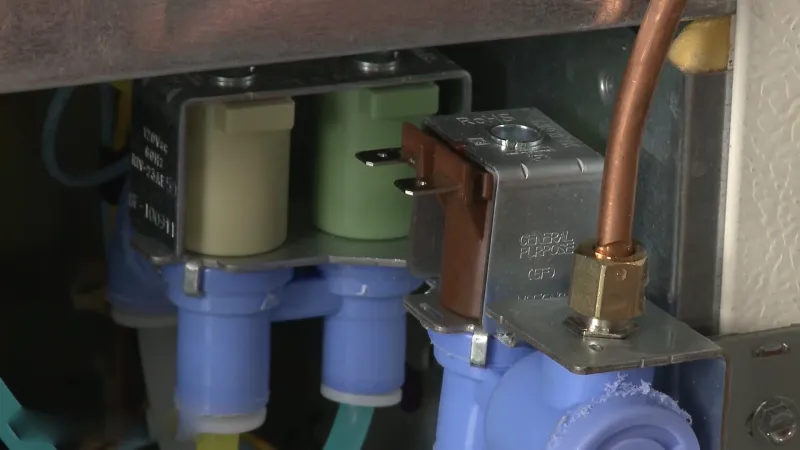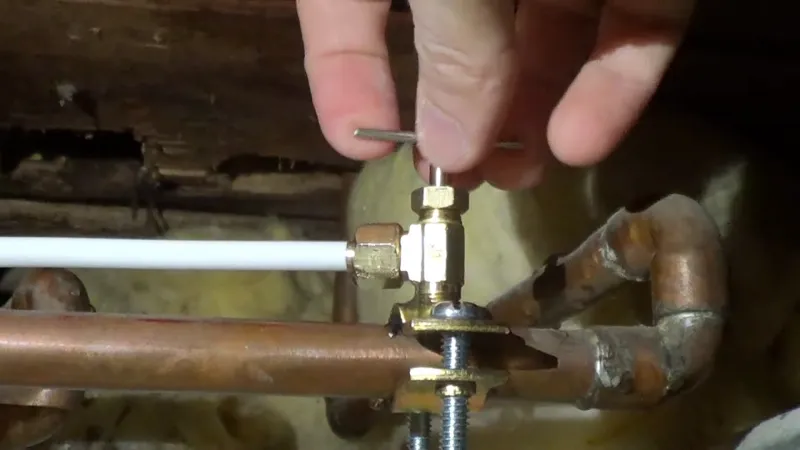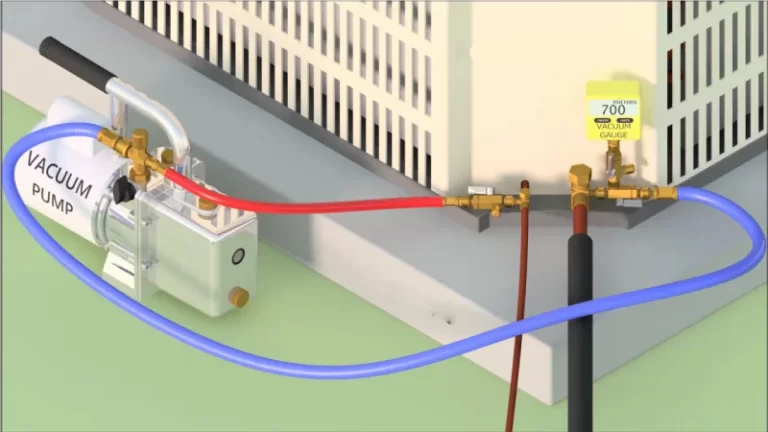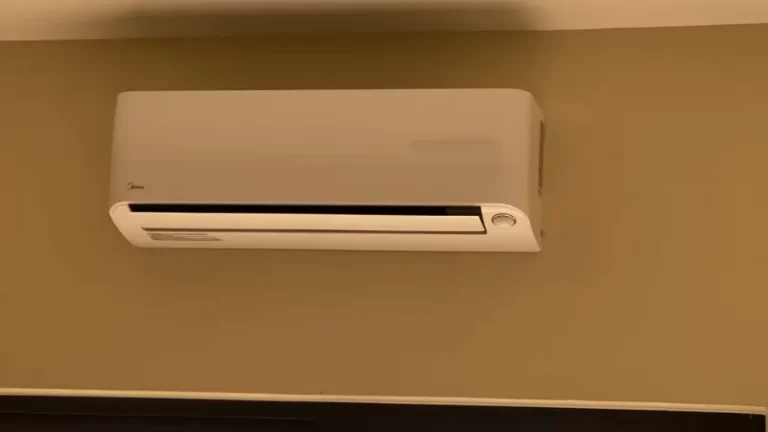GE Refrigerator Problems Water Dispenser and Solutions
A functioning water dispenser in a GE refrigerator is a convenient feature that provides quick and easy access to clean, filtered water. However, like any other appliance, the water dispenser can experience problems from time to time, which can be frustrating for the user.
In this blog, we will explore 5 to 10 of the most common GE refrigerator problems related to the water dispenser, including causes and solutions for each issue. Whether you are experiencing a clogged water filter, a frozen water line, or low water pressure, we will provide you with the information you need to get your water dispenser up and running again in no time.

You'll Learn About
GE Refrigerator Problems Water Dispenser
A GE refrigerator’s water dispenser may not function properly due to several factors. Some of the most common causes include a clogged water filter, a broken inlet valve, low water pressure, a frozen water line, or a faulty dispenser control board.
Frost Free Refrigerator Problems and Solutions
Improper installation, water tank freeze, and clogged water filters can cause issues with the water dispenser. In addition, the water inlet valve may not be functioning properly or the water pressure may be too low.
To ensure the longevity of the unit, it is important to properly maintain the water dispenser. To check if the refrigerator is clogged, hold down the water button located on the front panel and observe if water is flowing through it.
If the water dispenser stops working after a filter replacement, the issue could be related to water pressure and the normal pressure of the water inlet valve should be at least 20 psi.
Problem #1: Clogged Water Filter
A GE refrigerator is a common household appliance that offers a convenient way to store food and drinks. One of its popular features is the water dispenser that provides fresh and clean drinking water.
However, a water dispenser that doesn’t work properly can be a significant inconvenience and affect the overall functionality of the refrigerator. In this article, we will discuss five common GE refrigerator problems related to the water dispenser and their solutions.
A clogged water filter can affect the performance of the water dispenser in a GE refrigerator. Over time, the water filter can accumulate dirt, sediment, and other impurities, reducing the flow of water and making it difficult for the dispenser to function correctly.
Hot Weather Refrigerator Problems and Solutions
Solution
- To determine if the water filter is clogged, you can check if the water dispenser is dispensing water slowly or not at all. If this is the case, you should clean or replace the water filter.
- To clean the water filter, you can run it under water and use a soft brush to remove any dirt or debris. If the water filter is beyond cleaning, it should be replaced. The replacement process is straightforward and can be done in a matter of minutes.
It is essential to regularly check and clean the water filter to ensure that the water dispenser is functioning correctly. A clogged water filter can also lead to other problems, such as a decrease in water pressure and a decrease in the quality of the drinking water.
A clogged water filter is a common problem with GE refrigerators and can be easily solved by cleaning or replacing the water filter. Regular maintenance of the water filter can prevent this problem from occurring and ensure that the water dispenser is working correctly.
Problem #2: Broken Inlet Valve
The inlet valve is a crucial component of the water dispenser system in a GE refrigerator. It is responsible for controlling the flow of water from the main supply line to the dispenser. When the dispenser is activated, the valve opens and allows water to flow through the dispenser and into the glass.

How to Diagnose a Broken Inlet Valve and What to Do to Fix It
To fix a broken inlet valve, you will need to purchase a new valve and install it in place of the old one. This can typically be done with basic plumbing skills and a few common tools. First, turn off the water supply and unplug the refrigerator.
Then, remove the old valve and disconnect the water supply line. Connect the new valve to the water supply line, tighten the fittings, and turn the water supply back on. Finally, plug the refrigerator back in and test the water dispenser to ensure that it is working properly.
A broken inlet valve can cause serious problems with the water dispenser in your GE refrigerator. If you suspect that this is the problem, it is important to diagnose and fix it as soon as possible to prevent further damage and ensure that your refrigerator is functioning properly. With a little effort and some basic plumbing skills, you can quickly and easily replace a broken inlet valve and get your water dispenser working again.
Problem #3: Low Water Pressure
A functioning water dispenser in a GE refrigerator is essential for providing cold and refreshing water to your household. However, low water pressure can cause significant problems for your water dispenser.
Low water pressure reduces the flow rate of water, causing the dispenser to take longer to fill glasses or dispense water. As a result, you may experience a slow flow of water or no water flow at all.
Solution
How to determine if low water pressure is the problem and what steps to take to increase it
To determine if low water pressure is the problem, you need to check the pressure at the source, usually under your sink. If the water pressure is adequate at the source, then the problem may be with the water dispenser itself. To resolve this issue, you can take the following steps:
- Check for any kinks in the water line that may be reducing the flow of water to the dispenser.
- Clean the water line, as dirt and debris can clog the line, reducing water flow.
- If the water line is connected to a saddle valve, you may need to turn the valve clockwise to increase water pressure.
- If the water line is connected to a shut-off valve, you may need to open the valve completely to allow for maximum water flow.
- If the above steps do not resolve the issue, it may be necessary to call a professional plumber to assess and repair the water line.
low water pressure can be a frustrating issue for GE refrigerator water dispensers. However, by following the steps outlined above, you can diagnose and resolve this problem quickly and easily.
Haier Refrigerator Seal Problems and Solutions
Problem #4: Frozen Water Line
A functioning water dispenser in a GE refrigerator is a great convenience, providing easy access to cold water at all times. However, if the water line that supplies the dispenser is frozen, the dispenser will not work properly. A frozen water line can cause a variety of issues, including reduced water flow and even a complete cessation of water flow.

How to Diagnose a Frozen Water Line and What Steps to Take to Thaw It
To thaw the frozen water line, first, turn off the water supply to the refrigerator. Next, remove any food or items stored near the back of the refrigerator and unplug the appliance. Place a towel or cloth on the floor beneath the water line to catch any water that may melt during the thawing process.
Use a hair dryer set on low heat to gently thaw the water line. It is important to use low heat to avoid damaging the plastic water line. As the line begins to thaw, check for any leaks.
If there are no leaks, turn the water supply back on and test the water dispenser to see if it is functioning properly.
If the water line remains frozen, even after using the hair dryer, it is best to call a professional for assistance. A frozen water line can be a sign of a more serious problem with the refrigerator’s plumbing, and a professional will be able to diagnose and fix the issue more efficiently.
A frozen water line can be a frustrating problem for GE refrigerator owners, but with a little patience and some basic troubleshooting skills, it can often be easily resolved. If the problem persists, it is always best to seek the help of a professional to ensure the safe and proper functioning of the appliance.
Problem #5: Faulty Dispenser Control Board
The dispenser control board is an important component of the water dispenser system in a GE refrigerator. It is responsible for controlling the water dispenser mechanism, including the dispensing of water and the lighting of the dispenser.

The dispenser control board receives signals from the dispenser switch and sends voltage to the water inlet valve and the dispenser motor. If the dispenser control board fails, it can cause various issues with the water dispenser, such as water not dispensing or dispensing slowly.
How to Diagnose a Faulty Dispenser Control Board and What Steps to Take to Replace It:
It is important to note that troubleshooting and fixing a faulty dispenser control board can be a complex task, and it is recommended to seek the assistance of a professional if you are not experienced in refrigerator repair.
GE Refrigerators Problems and Solutions
Problem #6: Water Leak
A leaking water line or water dispenser is a common problem for GE refrigerator owners. If the water line leaks, water can leak into the refrigerator’s inner workings and damage the internal components. In addition, leaking water can ruin clothing and carpeting, making the repair cost prohibitive.
How to Locate and Resolve a Leaking Water Line or Water Dispenser in a Ge Refrigerator:
To locate a leaking water line, you will need to access the water supply line and the water dispenser. Locate the water supply line and then remove any rubber plugs from the appliance and connect a wrench to the line. Carefully unscrew the nut on the end of the water line and remove the line.
Turn the water supply back on, and look for any water leaks. If you find any leaks, turn off the water supply and dry the area. If you find any cracks in the appliance, you can fix this issue with a few household items such as toothpaste and a toothbrush.
If you are unable to locate any leaks, it may be necessary to call a professional for assistance. Water damage can be extremely expensive, so it is best to locate any leaks quickly and prevent them from occurring in the first place.
A leaking water line or water dispenser can be an expensive issue to fix. If you suspect that the leak may be inside the refrigerator, you may need to remove some of the refrigerator’s inner components to access the leak and make repairs. If you are unsure of how to remove and reinstall any of the appliance’s internal parts, please consult a professional appliance repair expert.
Problem #7: Leaking Gas
A leaking gas can be a significant problem for a GE refrigerator water dispenser. Leaking gas can be a big issue for consumers because of the cost involved. As water leaks out of the gas, it evaporates, causing the gas to slowly corrode and eventually shatter.
This can cost you hundreds of dollars in replacement costs.
How to Locate and Fix a Leaking Gas in a Ge Refrigerator:
To locate a leaking gas in a GE refrigerator, turn off the water supply to the appliance, and look for any wet spots. If you find any wet spots, remove any rubber plugs and tighten the nut on the end of the water supply line. Turn the water supply back on and test the water dispenser to ensure it is working properly.
If you are unable to locate any leaking gas, the problem may be more serious than you first suspected. It may be necessary to replace the gas in the entire dispenser and remove the inner workings of the appliance to do this. If you are not comfortable doing so, it is always best to contact a professional to ensure the safety of your refrigerator’s components.
French Door Refrigerator Problems and Solutions
Conclusion
The water dispenser in a GE refrigerator plays an important role in providing clean and refreshing water. This feature can be impacted by several common problems, such as a clogged water filter, a broken inlet valve, low water pressure, a frozen water line, and a faulty dispenser control board.
Understanding the causes and solutions to these problems can help maintain the functionality of the water dispenser and keep your refrigerator running smoothly. It is important to address any issues with the water dispenser promptly, to prevent further damage and ensure the quality of your water supply.
By taking the necessary steps to diagnose and fix any problems, you can ensure that your GE refrigerator water dispenser continues to provide safe, clean, and refreshing water for you and your family.




